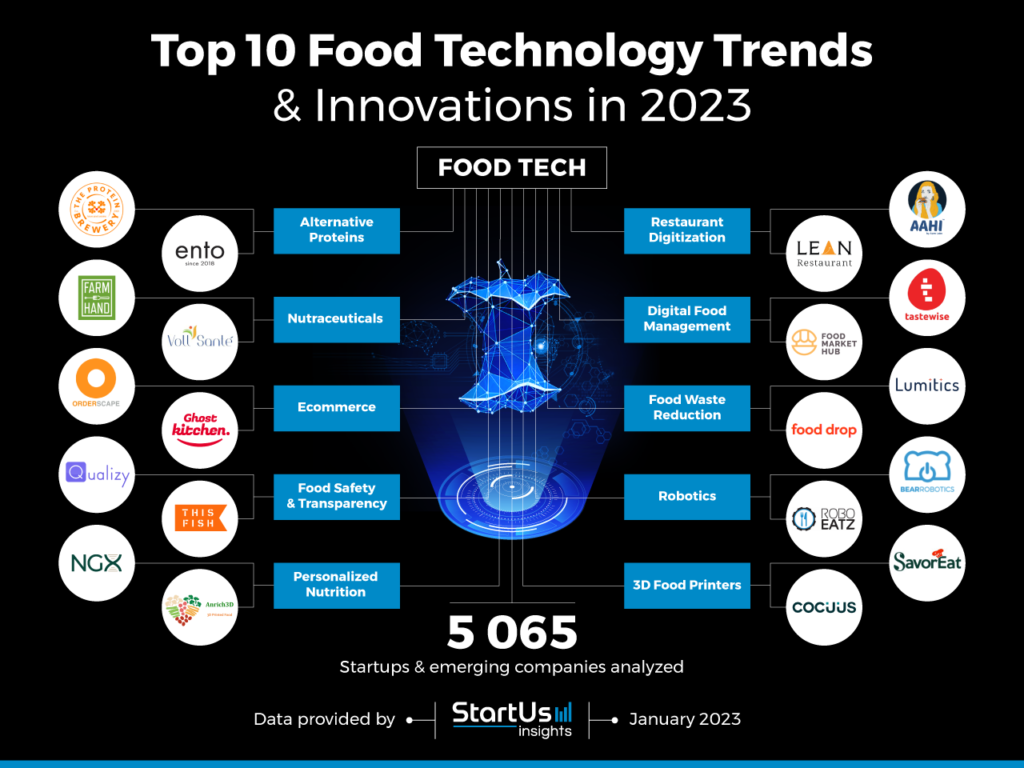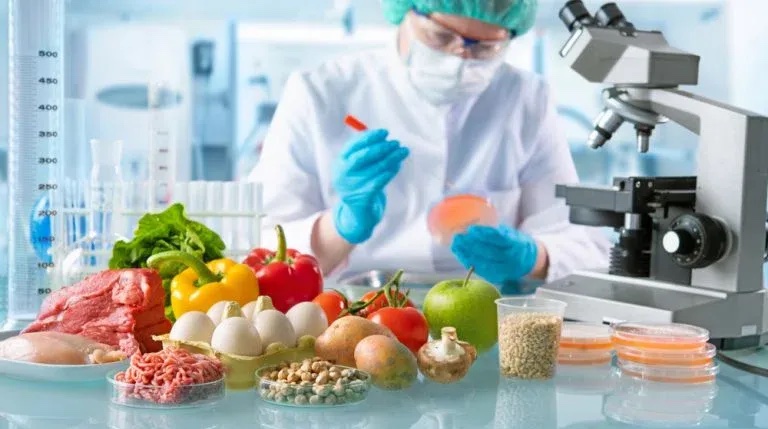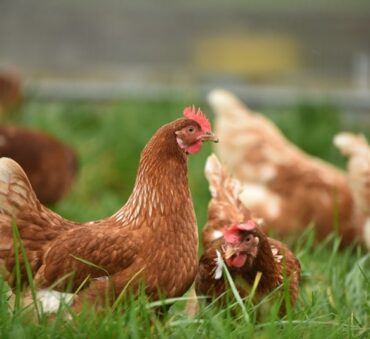Technology has become integral to our daily lives, including medicine, health care, and even food.
Innovation in technology helps create medical equipment to improve patient care, diagnosis, and treatment. In addition, electronic health records (EHRs) and telemedicine platforms allow for access to healthcare from anywhere. Not only does it change lives, but it has also become a lucrative business. In 2020, the global market for surgical robots was valued at over $4 billion.
Technology, however, doesn’t just impact the healthcare and medical industry. It also guides significant improvements in efficiency, safety, accessibility, and sustainability in the food industry.
In this article, we will investigate technology’s role in improving food safety, from production and processing to consumption.
What is food technology
Food technology is a specialized field that applies scientific and technological advancements throughout the food supply chain. It helps improve efficiency, safety, and quality of food production and consumption. It’s a field that builds on a food science foundation. However, it is focused on understanding and exploring the chemical and biological properties of foods to achieve safety. It then uses it for innovative solutions to implement during the supply chain. This entails production, processing, preservation, packaging, quality assurance, and distribution of food products.
Examples and use cases of technology in food industry
Use case technologies in the food industry are specific technologies used to solve problems or challenges in the industry. They are designed to achieve specific goals and improve different parts of food production, processing, distribution, and customer experience.
This is done to address specific challenges, improve efficiency, and ensure food safety.
Food manufacturing and processing technology
Food processing is essential for meeting consumer demands, improving food safety, and maximizing the use of available food resources. Additionally, it enables long-term preservation of food, extending its shelf life and reducing food waste.
Below are four noticeable technologies used in food manufacturing that can improve some fundamental functions in food processing.
- Freezing: Isochemic freezing rapidly freezes food products while maintaining their integrity and quality
- Disinfection: To improve food safety and extend shelf life, a disinfecting technology known as high-voltage atmospheric cold plasma (HVACP) is used to eradicate bacteria, viruses, molds, and other pathogens present on the surfaces of food products.
- Drying: Electrohydrodynamic drying (EH drying) is a process used to remove moisture from the food surface. This method offers faster drying times, improved product quality, and saves on energy.
- Authentication: Oxygen isotope modeling is used to assist and verify the authenticity and traceability of food products’ geographical origins. This prevents fraudulent activities and even mistakes.
Food traceability technology
In the fast-paced and complex world of food supply, food traceability technology has revolutionized how we track and monitor food. This ensures safety, transparency, and accountability. Implementing advanced technologies has made it easier than ever to trace the journey of food products from farm to fork.
According to an article on iGPS, several innovative technologies drive the food traceability revolution. One of these technologies is RFID (Radio Frequency Identification). It employs small tags or labels with radio transmitters to provide real-time tracking and identification of food items. As a result, it allows stakeholders to trace products through each stage of the supply chain accurately.
Blockchain technology has also emerged as a game-changer in the food industry. It enables secure recording and tracking of every transaction and movement of food items.
By leveraging blockchain, stakeholders can access a transparent and immutable ledger that verifies food products’ authenticity, quality, and safety.
Additionally, barcodes, QR codes, and IoT devices improve traceability by providing unique identifiers and real-time monitoring of crucial parameters like temperature and humidity. These advancements in food traceability technology enhance food safety and quality control and facilitate faster and more efficient recalls in case of any issues. Ultimately, food traceability technology empowers consumers to make informed choices about their food, promotes trust between stakeholders, and enhances overall supply chain management in the food industry.
Food supply chain technology
Advancing technology is revolutionizing the food supply chain. One area in particular that has benefited from technological innovations is logistics. By introducing tracking technologies such as GPS, transportation and delivery of food products are monitored in real time. Farmers can track their equipment, which improves overall farm safety.
Hardware innovations, such as drones, allow for smoother inventory management and cost-effective operational solutions, specifically in more remote areas. Farmers can actively monitor their crops, enabling them to make decisions on irrigation and the implementation of pesticides in specific areas.
Warehouse operations are improved by including Augmented Reality (AR), as this technology allows for the authentication of the selected item by comparing it to saved information stored in the database. This allows for improved and accurate order picking and inventory management.
Cloud-based platforms and Internet of Things (IoT) devices assure connectivity and sharing of real-time data.
Artificial Intelligence (AI) increases efficiency and cut costs, improves product quality control, reduces waste, and meets consumer demands while ensuring product quality, safety, and traceability.

Benefits of food technology
Food technology drives positive change in the industry, with numerous benefits to consumers and businesses, all the while playing a significant role in protecting the environment.
- Consumer: Food technology assists with public health and safety, with quality control measures in place to reduce foodborne illnesses. Additionally, it introduces innovative solutions to extend the shelf life of perishable items and minimizes food waste.
- Businesses: More jobs are being created that will allow for economic growth in the food sector and prevent food recall loss for food manufacturing companies.
- Environment: Technology innovations in agriculture allow farmers to increase the number of crops produced with the same amount of land, as well as improved sustainability practices, and enhance food security.
Sustainable food technology
In a time when food waste has become an immediate concern, the integration of sustainable food technology offers transformative solutions to the food industry to improve sustainability and minimize the food supply chain’s impact on the environment.
By integrating advanced technologies such as precision farming (precise application of resources), vertical farming (growing crops in stacked layers), and aquaponics (a combination of aquaculture and hydroponics), water and energy usage decreases and reduces greenhouse gas emissions. By integrating these advanced technologies, sustainable food practices can positively impact the environment.
Agriculture and food waste tech
With the aid of technology, agriculture and food waste problems can be addressed and solved. A few of these problems include;
- Food waste in supply chain: Edible foods are discarded throughout the food supply chain
- Unsustainable use of natural resources: Excessive water consumption, deforestation, and soil degradation
- Lack of effective quality control measures: Food fraud, contamination, and supply chain vulnerabilities
Innovative food waste technology from agriculture waste management companies like Shapiro can tackle these issues. Optimizing production processes, enabling real-time monitoring of storage conditions, minimizing the occurrence of overproduction and spoilage, minimizing the event of overproduction and spoilage, and food wastage overall.
Food recall technology
Food recall technology has become pivotal in responding to food safety and providing effective communication and recall procedure solutions.
Innovations such as Blockchain technology assist in tracing and verifying documentation throughout the food supply chain, allowing for quick and effective recall processes.
The IoT allows real-time data to monitor temperature, humidity, and storage conditions, assuring early detection before the issue becomes out of hand.
Technology also assists in communication between all stakeholders throughout the food call process, allowing more effective collaboration efforts in coordinating the food recall process.
How can food technology companies help?
Food technology companies drive positive changes in the food industry through innovation, collaboration, and a focus on sustainability.
These companies can contribute to improving food safety, reducing waste, promoting sustainable practices, and meeting consumers’ evolving needs and preferences.
This is, however, not as accessible for all to manage due to various barriers such as limited accessibility, expensive equipment that falls outside budget constraints, and challenges related to technical proficiency.
At Shapiro, we understand the intricacies of the food technology landscape. With years of experience, Shapiro has built strong partnerships all over the US that can cover and assist with the over-complicated technical side of the industry. Partner with Shapiro to reap the benefits of our customize food waste recycling programs.
Baily Ramsey, an accomplished marketing specialist, brings a unique blend of anthropological insight and marketing finesse to the digital landscape. Specializing in educational content creation, she creates content for various industries, with a particular interest in environmental initiatives.



